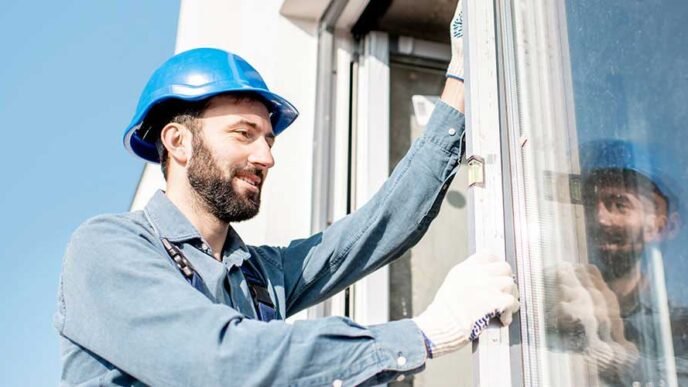The worst thing about washing your hands? That as soon as you’re finished, you have to touch the faucet that you just handled before getting nice and clean. The rise of the touchless faucet is slowly but surely doing away with that particular ick.
What Are Touchless Faucets?
Put simply, a touchless faucet is a faucet you don’t have to physically touch to turn it on. They’ve been common in public bathrooms for years, but they’re now gaining popularity in people’s homes too.
They contain a sensor which detects your hands when held under the faucet. This triggers the mechanical parts to allow the water through and allow you to wash up. There are a few different types of sensors on the market including:
- Infrared
- Solenoid
- Motion sensors
- Voice activation
- Hybrids of two or more of the above.
On top of these options, you can also choose between hard-wired models or ones which run on a battery.
However your model works, they all serve the same purpose: access to water without having to handle the tap.
The Benefits of Touchless Faucets
As with any emerging technology, people wouldn’t bother adopting it if they couldn’t see the benefits. With touchless faucets the main plus points are:
Hygiene and Cleanliness
When you’re washing your hands, the chances are good that it’s because you’ve been touching something nasty. Some small part of this, or the general dirt, grime and germs that we’re all constantly in contact with will rub off on your traditional faucet when you use it. Now you have nice clean hands but…you have to touch the faucet again to turn it off.
Touchless faucets eliminate this problem. You simply wave your dirty hands under the tap, wash and walk away, minimizing the chance of recontamination. This makes them particularly useful in places such as kitchens, bathrooms and even hospitals where avoiding accidental contamination is especially important.
Water Conservation
Whether you live in a metered area or simply care about your environmental impact, no one wants to waste a resource as precious as water. Touchless faucets can play an important role in helping to reduce wastage too.
As they automatically turn off the flow when not in use there are potential savings to be made. Add on top of this the fact that they use less, thanks to mixing air into the flow and you get just as much splash with far less waste.
While your particular savings may vary depending on how exactly you use your faucets, it’s possible to reduce usage by up to 50%.
Convenience and Ease of Use
We all want a little more convenience in our conveniences…
Whether your hands are full or absolutely caked in dirt, a touchless faucet makes washing them that little bit easier. Rather than fumbling with the controls, all you have to do is hold out your hands.
This feature also makes them absolutely great in terms of accessibility. Should you happen to have reduced mobility in your hands, a touchless faucet can totally do away with the need for awkward fumbling.
The Potential Drawbacks Of Touchless Faucets
Naturally enough, no system is without its problems and touchless taps are no exception. Some of the biggest attendant problems include:
Cost Considerations
It’s not much wonder that a faucet that incorporates more advanced technology is going to cost you more. This doesn’t just apply to the device itself though. It’s a more complex job to install it, maintain it and it does have (small) running costs too.
All of this adds up to make opting for touch free considerably pricier than traditional faucets.
Technical Issues
Call us pessimistic but the more features a mechanism has, the more that can potentially go wrong with it. Sensors can malfunction and batteries will eventually wear out and both those issues will need fixing. Unfortunately, this can add a significant cost to maintenance prices as they’re relatively specialist bits of kit.
On top of that, it still has most of the physical problems that can befall a traditional model too.
Power Dependency
While the worst of this can be mitigated with a backup power supply, it’s worth considering what happens when the power goes out.
As the sensors which allow touchless faucets to operate require an electrical supply (either hardwired or batteries), sometimes they’ll end up out of action when that supply is disrupted. This can be worked around with regular checks and backups, but it’s a hassle that old-fashioned models don’t have.
Installation and Maintenance
If you’re thinking about taking the plunge and having a touchless faucet installed, you may be wondering what the process is.
While a keen DIYer could probably manage the job, it’s really best left to the pros. Mixing water and electricity can be dangerous if you don’t know what you’re doing. There are also considerations such as water purity and pressure that a professional will be best placed to advise on.
Much of the process is the same as a traditional faucet. You attach the body to your surface and then connect up the tails to supply the hot and cold water. Where it differs is in the installation of the battery or hard-wired connection to the mains. The exact process will vary depending on your chosen model.
Maintenance
There are two things to consider when keeping a touchless faucet in working order. Keeping it powered and keeping the sensor clean.
As with any tap, soap scum and general dirt with accumulate over time. This is a particular problem for touchless models as it can impede the sensitivity of the sensors. Keeping them clean and clear ensures that this needn’t be an issue.
It’s also worth regularly checking and replacing batteries as needed. This will avoid you ending up with dirty hands and no way to wash them.
Choosing the Right Faucet
As with any major upgrade to your home, it’s worth doing your research before buying. You need to ensure that your new faucet will meet your requirements in terms of use, budget and compatibility with your existing plumbing.
It’s also worth spending some time shopping around for the perfect design too. Check out reviews and make sure you’re purchasing from a reputable brand to avoid disappointment. All the major players in the industry produce their own versions, so you won’t be short of choices.
As ever, if you’re in doubt, a plumber is only ever a phone call away and trust us, they’ll have opinions to share.












